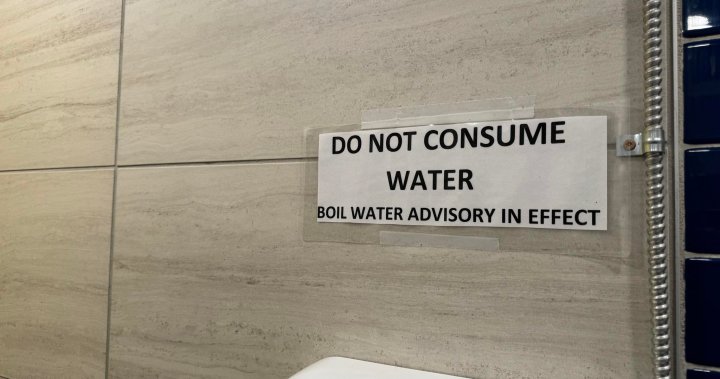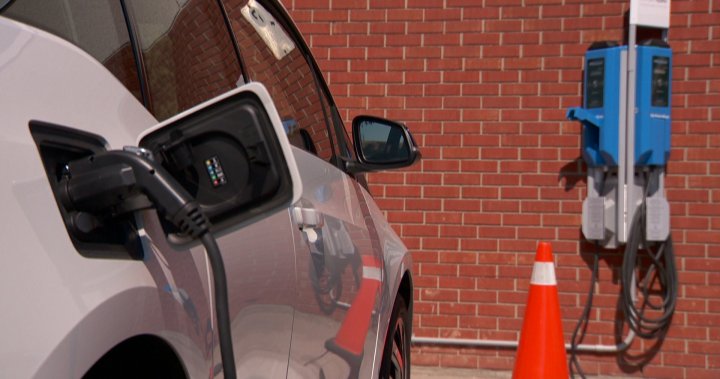This opinion piece is by Dr. Blake Shaffer, an assistant professor of economics and public policy at the University of Calgary. He was formerly the head trader for western power and gas at TransAlta.
For more information about CBC’s Opinion section, please see the FAQ.
Another year, another step closer to the end of coal power in Alberta.
As we turn our calendars to 2022, only three coal-fired power plants will remain in Alberta. With TransAlta’s Keephills 1 coal power plant shuttering Dec. 31, and Keephills 3 and Sundance 4 switching from burning coal to natural gas, the Genesee 1, 2, and 3 facilities at Wabamun are now the last of what was, only a few years ago, Alberta’s most-used source of electricity.
The end of coal power in Alberta is happening faster than many expected, and well ahead of regulations set first by Ottawa in 2012 and updated in Alberta in 2015. Only a decade after Alberta commissioned its last coal plant, the regulatory phase-out scheduled for 2030 is a moot point, with the remaining Genesee plants set to convert to natural gas by the end of 2023. Coal, once responsible for over 80 per cent of Alberta’s electric generation, and roughly half only five years ago, will be gone.

This will be the biggest greenhouse gas reduction in Alberta’s history. A true climate success story. But we’re not done yet. Converting to natural gas was the easy part. The road ahead to meet the federal government’s goal of eliminating all emissions from the power sector by 2035 will be the hard part.
Our recent cold snap, with temperatures plunging to –30, and lower, across the province offers a glimpse of the challenge ahead. While renewables now account for one quarter of Alberta’s generating capacity (that alone is a pretty amazing stat), they produced less than five per cent of the energy during the cold days at the end of 2021. A dearth of wind coinciding with the coldest conditions, something unfortunately all too common for Alberta wind in winter, meant the lion’s share of Alberta’s power came from natural gas.

This isn’t intended as a knock on renewables. It’s simply a reminder that they are what they are, and that is raw, or intermittent, energy. And that’s OK so long as that’s what we expect and what we’re paying for. When wind and solar were expensive, as in Ontario a decade ago, people had a reason to question their merit. But now that they’re cheap — and they really are cheap — it can be worth accepting their intermittency. (As I like to tell my electricity students, even I will drink cheap red wine sometimes, so long as it’s cheap!)
The key is knowing what to expect, being honest about what they provide (and paying accordingly), and finding ways to integrate these abundant and cheap resources into our power mix using other flexible, or “firm,” resources. Renewables can and likely will produce the bulk of Alberta’s electric energy in the future, but other resources will be needed to couple with them to ensure reliable capacity, or “on-demand” availability.
Firming up Alberta’s power supply
With that in mind, how can Alberta get to zero while keeping the lights on (and costs down)?
First, we need to better engage demand. While not for everyone, encouraging those with some flexibility (hello, EV chargers!) to shift when they pull from the grid can limit the strain on the system. More supply variability from renewables, and cheaper automated ways to flexibly control demand, make this an increasingly valuable and feasible low-cost option. Regulators and electricity providers need to innovate to encourage this type of behaviour.
Second, while unabated natural gas has a limited role in a zero emission future, natural gas plants equipped with carbon capture offer a way to take advantage of Alberta’s plentiful natural gas reserves. Capital Power is planning to go down this route with their Genesee facility. Another option is to convert these plants to clean-burning hydrogen. As hydrogen production gets cheaper, this starts to become an attractive option. “Green” hydrogen, produced through electrolysis, also offers a way to store hydrogen by soaking up periods of excess wind and solar power.

Third, nuclear reactors, of the small modular variety, are a potential game-changer. Though they have to clear some pretty steep technical and economic hurdles to be viable, it’s worth remembering that wind and solar were also once deemed infeasibly expensive 10 years ago, until they weren’t. 2035, however, is a tight deadline for nuclear to get its technical, economic, and regulatory ducks in a row. Geothermal is another firm supply option, one similarly plagued with cost questions, but also one that can leverage the oil and gas skill set in this province.
Fourth, storage offers a way to take advantage of Alberta’s abundance of cheap wind and solar, shifting the energy from periods of plenty to when it’s needed. Batteries can offer short duration storage, while pumped hydro and even compressed air can offer longer duration opportunities. As renewables get cheaper, storage becomes increasingly attractive. And believe me, Alberta will be building a lot more renewables in the years to come.
Fifth, bigger transmission connections between Alberta and B.C. ought to be part of the mix. Comparative advantages exist on both sides of the border (B.C. has the peaking capacity; Alberta has the cheap variable energy). Rather than one-way flow like pipelines, transmission lines mean exporting when the wind is fierce, and importing hydro power when it’s not. This exchange won’t come free, but it’s cheaper than many of the alternatives.
So what’s needed to make these resources a reality?
For starters, those saying “it can’t be done” need to be reminded that many also said phasing out coal by 2030, let alone 2023, wouldn’t be possible, that coal-to-gas conversions were hard, and that wind would never be procured for less than $80 per megawatt-hour, let alone the mid-$30s observed recently.
Nonetheless, some clarity on where we are headed is needed. Uncertainty is anathema for investors. If Alberta is truly headed for zero emission power by 2035, planning and investment needs to start now. To the extent governments can de-risk policy uncertainty by providing clear and durable guidance on future carbon prices and emissions regulations, this will better enable the new resources that are needed to be built.
Also, and perhaps a topic for a deep dive on another day, Alberta’s market design may have to evolve to ensure reliability as we transition. We went down this road five years ago, with Alberta’s system operator recommending, and the NDP accepting, the introduction of a capacity market — essentially paying for steel in ground, i.e., the ability to produce, not just energy generated. This was rescinded in 2019 under the UCP, but the need for some form of instrument to ensure sufficient resources in the longer run never went away.
To date, Alberta’s short run energy market has attracted sufficient long run investment. Will that be the case as we transition? And, importantly, what will prices do along the way? Texas, whose power market is the closest thing in North America to Alberta’s, is grappling with this same question in the aftermath of brutal power outages last February. They, too, are currently considering enhancing their market with some form of reliability mechanism. Alberta ought to take note and take this issue on proactively.
What are we the consumers to do?
Finally, what does this mean for you and I?
Those that follow me on Twitter won’t be surprised to hear me say: get on a fixed rate plan. While the market will be volatile, there’s no reason those bumps need to flow through to consumers’ pocketbooks. There remain five-year fixed rate plans today that are well below where the market is currently indicating prices will be over that period. And if things change, most of these plans give you the flexibility to exit. I’ve done it, and I’d encourage others to consider it as well.

Another option to consider to protect yourself against rising prices is to add solar panels. It won’t take you off the grid — you’ll still be paying those pesky fixed charges, and for power when you’re using more than you generate — but the amount you produce will reduce your exposure to energy prices, even allowing you to receive a credit when you’re surplus. What was once a luxury for the ultra-green or techno-curious is now in the realm of economically reasonable with panel costs falling and the federal government handing out $5,000 retrofit cheques. And with the cities of Calgary and Edmonton now offering low-cost financing by spreading the cost over many years on your property tax bill, it’s more accessible to more people.
The bottom line is that Alberta’s power system is changing. And though the emissions reductions are a good thing, with change will come some turbulence. Getting to zero by 2035 will be no easy feat with many bumps in the road. It’s time to ensure our markets, policies, and plans are ready to get us there.
Do you have a strong opinion that could add insight, illuminate an issue in the news, or change how people think about an issue? We want to hear from you. Here’s how to pitch to us.






More Stories
Do Canadians have an appetite for electric vehicles? Experts are divided | Globalnews.ca
Boeing and NASA decide to move forward with historic crewed launch of new spacecraft
ByteDance prefers TikTok shutdown in U.S. if legal options fail, sources say